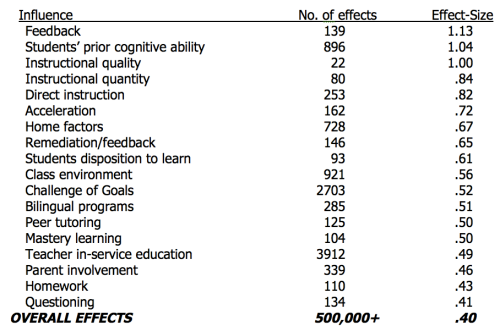
We’ll start with some words from Number 10 Downing Street:
“The Coalition Government introduced the Pupil Premium in 2011 to provide additional school funding for those children classed as having deprived backgrounds, and also those who had been looked after (by a local authority) for more than six months. The Service Premium was also introduced for children whose parent(s) are, or have since 2011, served in the armed forces.” Source Material for super keen readers.
Regardless of whether you agree with the idea of the Pupil Premium and the considerable emphasis placed thereupon, it is here to stay. I have to be honest that over the past few years I have had mixed feelings and a lot of questions about it: what about children who fall ever so slightly above the threshold? What about students with parents in the forces that actually do not access the funding and do not want it? Can it make that much of a difference? Are we in danger of over-emphasizing it? One headteacher’s blog wrote about the disadvantage gap being a chasm. It is a complex issue but not one we should shy away from.
Earlier today our SENCO shared this picture:

It reminds me that my job is a teacher is to ensure that every pupil has a chance to achieve. For some those boxes in the picture will equate to extra funding from Number 10 and for others the boxes are the process of scaffolding and lesson planning. For some pupils the boxes symbolise my teaching, my feedback and my attention or time spent with them. Feedback has been covered here, support and scaffolding for lower ability has been covered here and here. Today we are looking at the Pupil Premium.
Why Pupil Premium Students struggle:
Pupil Premium encompasses a variety of different situations. It should never be confused or used as a synonym for low ability or behavioural difficulties. Both might be true but they are not always the case. I have done my best to list the struggles and the type of student in the table below.
| Type of Pupil Premium Student |
Explanation |
| Free School Meals |
Eligibility for free-school meals is used as an indicator of poverty. It may be that such students eligible come from homes that do not support their education in terms of material resources, or in terms of assisting with homework. Other needs might be more basic in terms of uniform, cleanliness or communication skills. |
| Service Children |
Children with parents in the armed forces are often eligible for the pupil premium. In my experience this presents slightly different issues in terms of T&L. Some students will be anxious as a result of the situation the parent is in and the infrequency of contact. Other students may need no help at all as the other parent works and provides for them. There is a wide spectrum of need when it comes to this type of student. |
| Children in Care |
Inevitably these students will have varying issues. Much depends on the reason these students are in care, and at the same time, the quality of care they are currently receiving. Children in care are often quite well supported but struggle in other areas possibly in terms of development, communication and social skills, or mental health. |
| Ever 6 |
This refers to the fact a student may have been eligible for the pupil premium in the past 6 years. It is worth knowing as whilst the student may no longer be eligible; there may still be needs that require meeting or they may only have moved slightly above the threshold for FSM. |
What is suggested to be effective?
Having read OFSTED’s report on how schools are using the pupil premium. They mention a number of ideas but many relate to SLT and governance. The following are their suggestions for the classroom:
- Effective teaching and learning for pupil premium students – just teach great lessons everyday.
- Target support effectively. How are you moving students forward? What support do they have?
- Know the desired outcomes for PP students, not always age related but higher.
- Know your pupils.
- Deploy your TA effectively (see previous blog post here).
- Enhance their thinking, study and revision skills (see blog on revision here).
They also say the following:
“Where schools spent the Pupil Premium funding successfully to improve achievement, they never confused eligibility for the Pupil Premium with low ability, and focused on supporting their disadvantaged pupils to achieve the highest levels and thoroughly analysed which pupils were underachieving, particularly in English and mathematics, and why.”
Having read around the subject it appears there is a “no excuse” campaign going on. Social deprivation, familial background, home situation, low attendance and level of need are not excuses (see 2013 presentation by OFSTED here).
In short, the pressure is on…

What can we do in MFL?
There are a lot of questions below designed to provoke thought and hopefully action.
Data tracking – Analysing data has become a necessary part of the job. Whilst we may find it tedious, it is a means to an end. The end should be answering the following kinds of questions:
- Are your pupil premium students where they should be?
- Are they attaining in line with their targets (grades 5-9, positive progress 8 score, FFTD, or whatever you use)?
- If they are not attaining then you need to be asking why?
- Is the underachievement isolated to MFL or is it more widespread?
- Where are they achieving? Why?
- How can you use that knowledge to your advantage? What has that teacher or department done? What are they currently doing?
- Could another member of staff give a pupil a bit of encouragement that causes them to see your subject differently? Is their tutor/head of year/achievement leader (or whatever your school calls the role) pushing them to achieve in all subject areas?
Targeted Questioning
Some teachers would advocate a system of no-hands-up whereby any questions are directed at PP students first and then at other key groups (underachievers, more able, SEND, disengaged boys). On a seating plan I do have key individuals highlighted and will more often direct my questions towards them.
Others might add on to this the idea of “no opt out” where the kid is not allowed to say “I don’t know”. It is entirely up to you how to run your classroom.
Quality first marking/feedback.
A suggestion from another school was to mark all PP books first in the pile as you are freshest and most alert. It is hard to dispute the logic if that is true for you. Personally, I find my marking gets better after the first three or so. I would need to adapt that strategy slightly. I do have some issue with the ethics of this approach, as every student should be receiving decent feedback from me. There are also students out there who may not be in receipt of the Pupil Premium but actually fighting battles at home on a par with, or worse than those who are classified as disadvantaged. It is up to you as a teacher to differentiate accordingly.
Seating plans – Some of my colleagues advocate seating all PP students in the same seat in their room so they always know who they are. Others advocate sitting them at the front of your classroom to enable them to seek help. Yet more suggest surrounding them with pupils who can positively influence them. It is up to you as a teacher to decide and you probably have your own views, but we have to know who they are and we have to be able to answer the question: how are you catering for their needs?
Strengths/weaknesses analysis – this was quite a useful exercise with my year 11s. Looking at the data I had, their performance in class and their books. What are their strengths and weaknesses as far as language learning was concerned? Do they know what their strengths are? Are they playing to them and working on their weaknesses? One of the issues with the new GCSE is the many elements: speaking, listening, reading, writing, translations, photocards, roleplays, target language questions, target language answers, 40 words, 90 words and 150 words. What bits are they doing well? What do they need support with? I have seen teachers on some MFL Facebook groups looking for “quick wins”. Actually, could it be a case of looking at the individual pupils and picking one area they need to develop that is going to make the most telling difference in terms of marks?
Resourcing in school – This could be hotly debated and there is a strong argument from both sides. Lend them equipment or don’t lend them equipment, it’s up to you. Similarly the issue is the same with books, do you let them take it home? Much also depends on the individual pupil. For some pupils you will never see the book or pen again, others will have it back in the subsequent lesson. Perhaps for those who persistently struggle the school could supply a pencil case that could be picked up from a central point and returned at the end of the day? Rewards could also be used to ensure its return.
Bought resources
- Revision guides?
- A note on guides – having examined a few I am leaning towards CGP. I just feel their explanations and layout are more accessible.
- Revision workbooks?
- Some exam boards offer these full of past paper style questions.
- Photocopiable booklets from TES?
- Learning websites such as samlearning.com and Vocabexpress.
- Twilight sessions.
- Revision sheets with QR codes containing links to good sites.
- MFL revision conferences (one school in Peterborough did this – found via google)
- Half-term revision sessions.
With all of this there is a caveat: you need to evaluate how effective and helpful it was. This is very much something OFSTED and the DofE are looking at. It is no longer simply a question of how are you using the money. The assumption is you are using it; the question is what effect is it having?
Resourcing the student with strategies and techniques
Do your PP students know how to revise effectively? I hear from year 11s various comments on learning styles and about highlighters and gel pens however the research shows these to be largely ineffective. If you are curious about how to make revision more effective then I suggest the following:
The Guardian – The Science of Revision – excellent article with links and research to back up.
EverydayMFL – GCSE Revision – Here’s one I made earlier, nothing like a bit of shameless self-promotion!
Classteaching – quality advice and backed up by research.
Anything to prevent the eventuality below:

Relationship – Some students need someone to believe in them in spite of their home background. They need that person who sees them for who they are and what they can become. They need someone who sees them as a work in progress and who will not give up on them. They need you to be the person who appreciates them just as they are, but cares too much to leave them that way. I am not saying you have to be their best buddy but you can be the role-model, support and guide to life that they have lacked.
“Carpe diem, seize the day boys, make your lives extraordinary.”
Teaching Assistants – Teaching assistants can be the unsung heroes and heroines of your classroom if deployed properly. These are the questions you need to be thinking through:
If you have one then what is their remit in your classroom?
- Do you direct them or leave them to it
- Do they have a seating plan and know who they are meant to work with?
- Do they have an order of pupils?
- Could you promote independence by asking TA to move on after 1-2 minutes with a student?
- Do they elicit or explain?
- Do they guide to the answer or give the answer?
- How well resourced is your TA? Do they have your schemes of work? Do they see a lesson plan or do you brief them on what is going to be taught?
- Who is working harder: your PP student or your TA?
- Could you get some planning time with a TA attached to a particular student?
Parents – Not all PP students have difficult family situations so get the parents onside. Be careful not to patronise. It is very easy to assume certain things when the label PP is on a seating plan or class list. Parents evening is an excellent opportunity to build relationships, develop that link between school and home and facilitate learning and progress. One parent recently asked me “what can they be doing outside of school as I don’t speak any languages?” 2-3 minutes later she left armed with strategies and places to find resources to help. In terms of cost, it was minimal but there is a huge potential yield.
Marking Meetings – One of my colleagues recently suggested this at a meeting. I’m quite keen to try it. It used to be the norm when I was in school. Certain teachers would call you up to their desk and go through your book marking it with you while the class were working their way through exercises. Would a pupil premium student benefit from some live feedback and a discussion of misconceptions? Equally, this could apply to all pupils but if you’re going to work through a group, why not start with some PP students?
Any great ideas? Leave them in the comments section below!



































.jpg)


















 Great way to build vocabulary. If you have access to dictionaries, picture dictionaries or Usborne’s first thousand words. Get students to find 5 of something so they broaden their vocabulary. Try to avoid them getting hung up on finding the duck!
Great way to build vocabulary. If you have access to dictionaries, picture dictionaries or Usborne’s first thousand words. Get students to find 5 of something so they broaden their vocabulary. Try to avoid them getting hung up on finding the duck! Talk or write about a topic without using certain words. In the cases of one or two students, I’m going to declare war on the next individual who uses interesante, aburrido, bueno, malo, emocionante.
Talk or write about a topic without using certain words. In the cases of one or two students, I’m going to declare war on the next individual who uses interesante, aburrido, bueno, malo, emocionante. 

